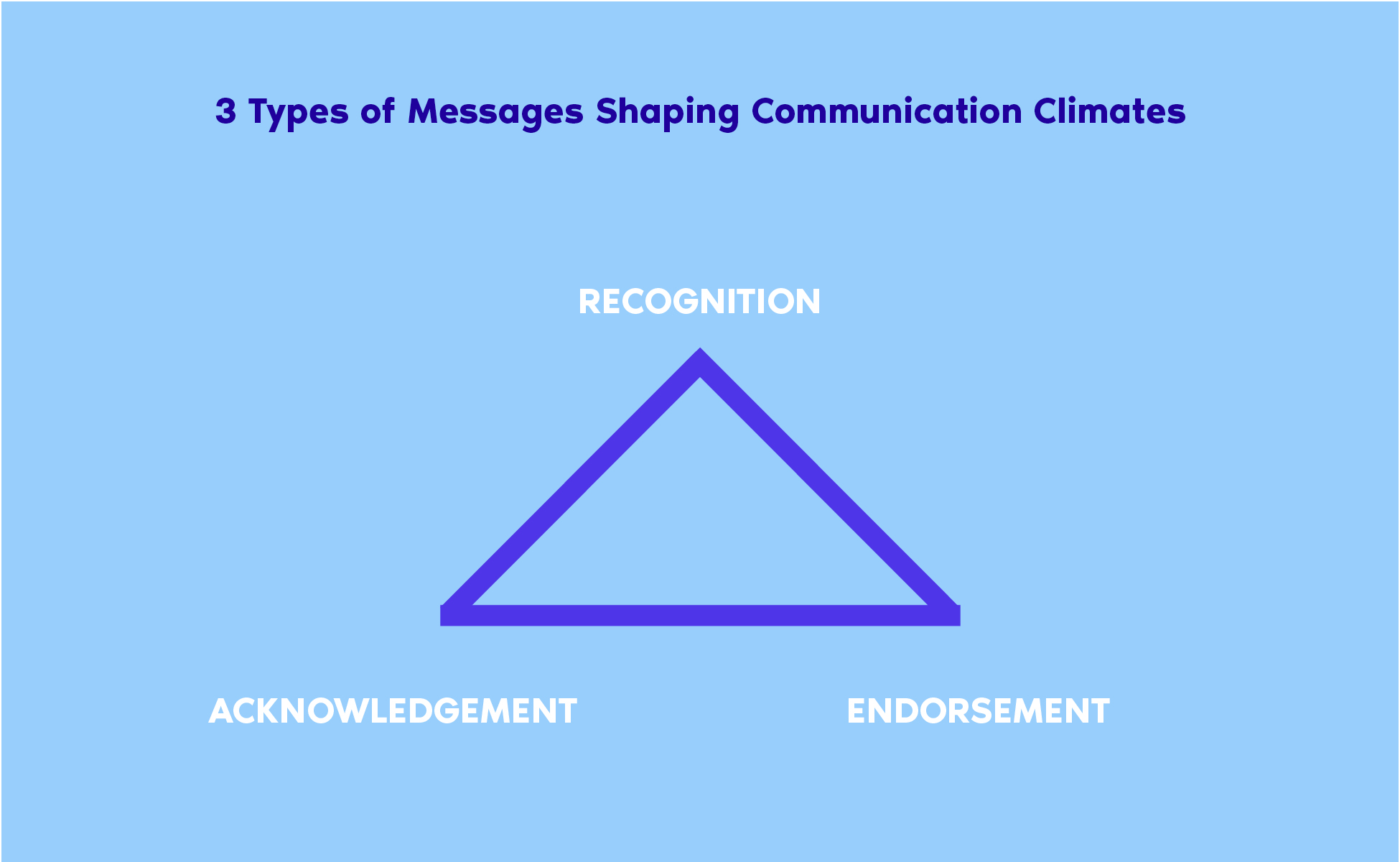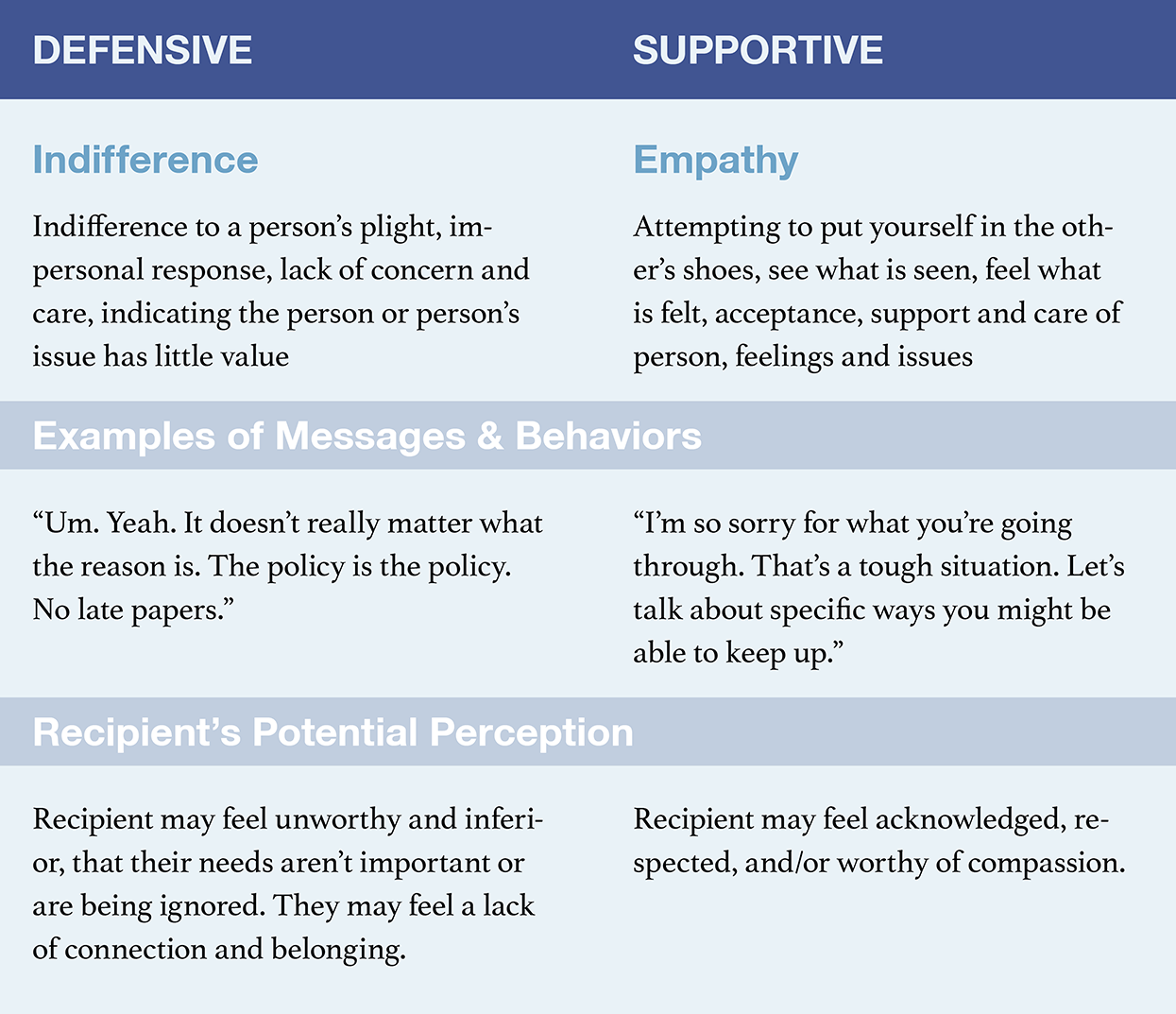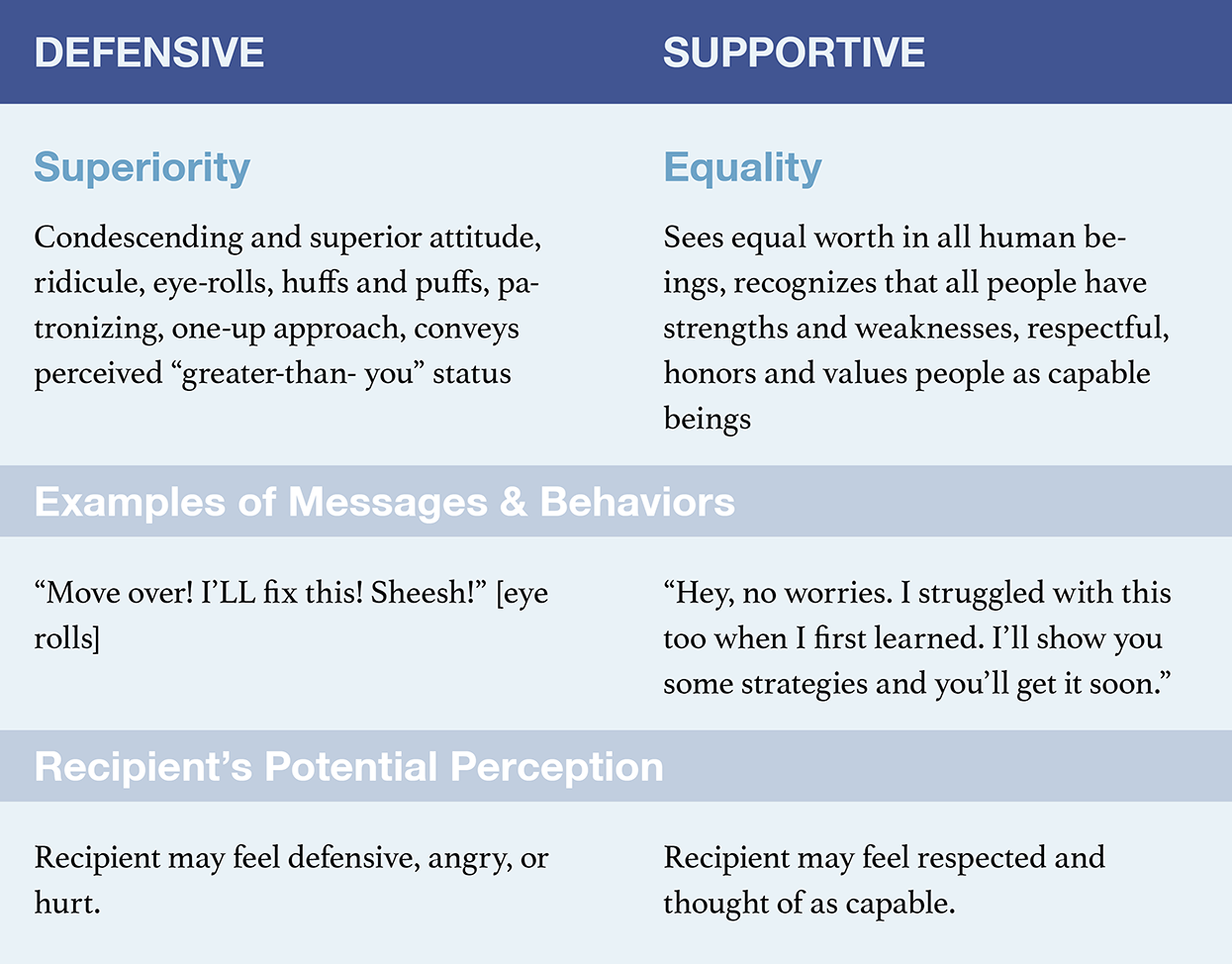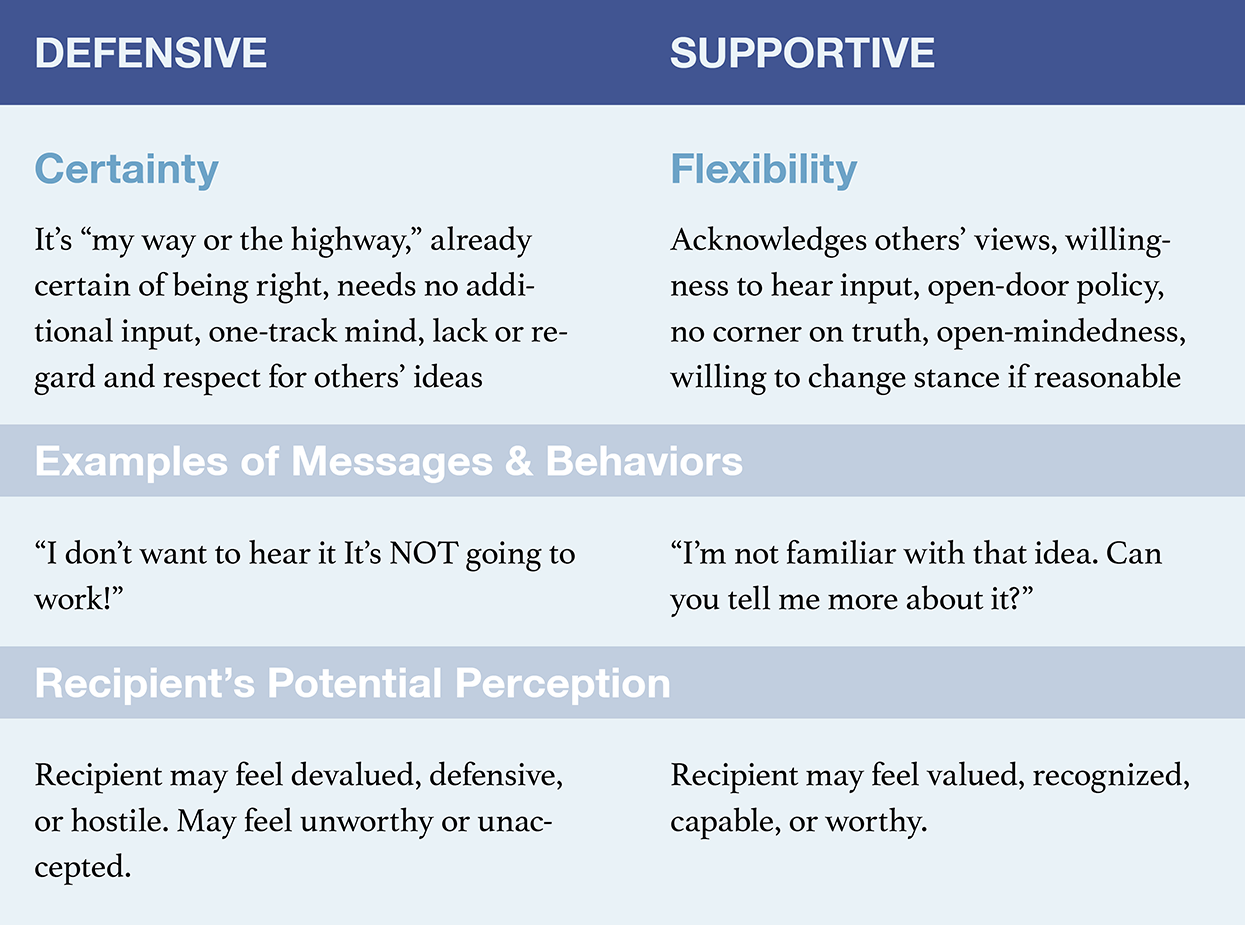In this section, we will examine two frameworks for understanding and identifying relational messages that contribute to communication climate: confirming versus disconfirming messages and supportive versus defensive messages. Many of the common behaviors that can lead to a cold climate are performed in an automatic state of mind, without forethought or strategy. Exploring these types of messages in pairs helps us be better able to mindfully recognize warm climate alternatives that might be better received.
10.3.1: Confirming verses Disconfirming Messages

Confirming messages convey another person’s value and worthwhile disconfirming messages may suggest someone is devalued and unimportant. Obviously, most of us like to receive warm confirming messages because they foster emotional safety as well as personal and relational growth. However, it is likely that many of the messages you receive and give are somewhere between the two extremes. Let’s look at three specific types of confirming and disconfirming messages. Consider how each may meet or not meet our social needs.
- Recognition Messages: Recognition messages either confirm or deny another person’s existence. For example, if a friend enters your home and you smile, hug them, and say, “I’m so glad to see you” you are confirming their existence. If you say “good morning” to a colleague and they ignore you by walking out of the room without saying anything, then they are creating a disconfirming climate by not recognizing you.
- Acknowledgement Messages: Acknowledgement messages go beyond recognizing another’s existence by confirming what they say or how they feel. Nodding our head while listening or laughing appropriately at a funny story are nonverbal acknowledgement messages. When a friend tells you they had a really bad day at work and you respond with, “Yeah, that does sound hard, do you want to go somewhere quiet and talk?” you are acknowledging and responding to their feelings. In contrast, if you were to respond to your friend’s frustrations with a comment like, “That’s nothing. Listen to what happened to me today…” you would be ignoring their experience and presenting yours as more important.
- Endorsement Messages: Endorsement messages go one step further by recognizing a person’s feelings as valid. Suppose a friend comes to you upset after a fight with their partner. If you respond with, “Yeah, I can see why you would be upset” you are endorsing their right to feel upset. However, if you said, “Get over it” you would be sending messages that deny their right to feel frustrated in that moment. When we let people own their emotions and do not tell them how to feel, we are creating supportive climates that provide a safe environment for them to work though their problems.
10.3.2: Supportive verses Defensive Messages
Another useful framework for understanding communication climate can be found in the six defensive and supportive behavior pairs proposed by psychologist Jack Gibb in 1965, adapted here with some pairs re-named for clarity. These six behaviors are, on the one hand, likely to generate an emotional climate of defensiveness (cold) and are, on the other, likely generate a supportive climate (warm).
In the box below, we define and give examples of each of the six pairs: evaluation/description, manipulation/straightforwardness, control/collaboration, indifference/empathy, superiority/equality, certainty/flexibility. In addition, we propose some possibilities for how climate might be perceived by the recipients of such behavior and why it might be perceived that way.





